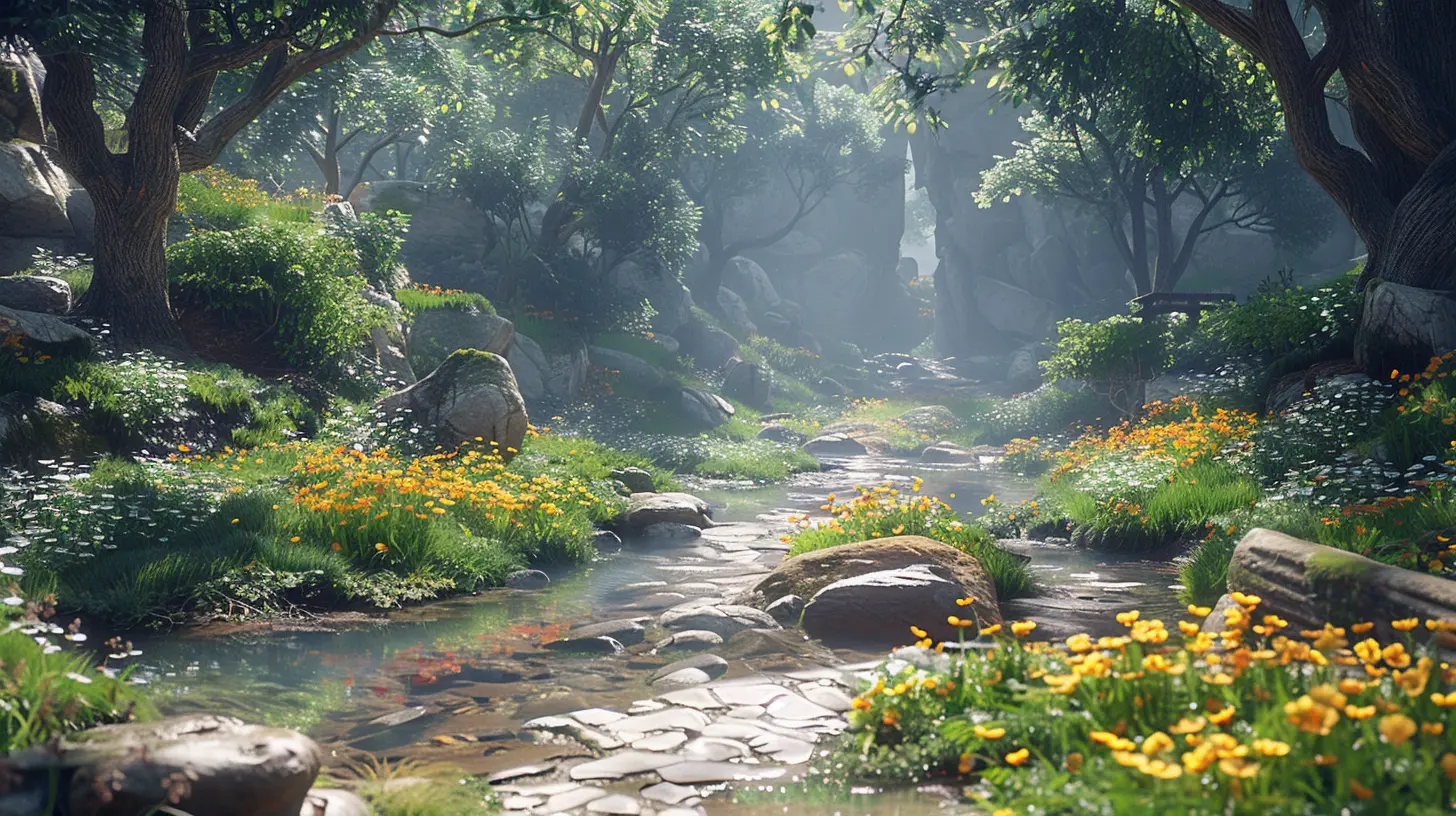How Unreal Engine is Shaping the Sandbox Game Genre
31 October 2025
Let’s be honest, sandbox games are the playgrounds of the gaming world. They hand you the keys and say, “Do whatever you want.” It’s total freedom in a digital box. But here’s the real question — what’s powering these massive, open-ended worlds behind the scenes? If you’re thinking “magic,” you’re not totally wrong. The real sorcery, though, is happening thanks to Unreal Engine.
This powerful game engine from Epic Games has evolved into a game-changer (pun intended) for developers, especially when crafting sandbox titles. From mind-blowing visuals to seamless world-building tools, Unreal Engine is redefining what we thought was possible in open-world, user-driven games.
So, buckle up — we’re diving into how Unreal Engine is shaping the sandbox game genre, and trust me, it’s way more exciting than just pixels and polygons.
What Makes a Sandbox Game... a Sandbox Game?
Before we get into the Unreal magic, let’s clear the air — what exactly is a sandbox game?Simply put, it’s a game that emphasizes freedom. Think less “follow this path” and more “here’s a hammer, go crazy.” You’re given a dynamic world with minimal rules and tons of tools to interact with it however you want. Popular examples? Minecraft. Grand Theft Auto V. The Sims. Rust. Ark: Survival Evolved. You get the idea.
Sandbox games are all about:
- Open-world exploration
- Non-linear gameplay
- Player-created content
- Environmental manipulation
To create such flexible and reactive worlds, you need a powerhouse engine. That’s where Unreal Engine steps in, wearing its superhero cape.
A Quick Look at Unreal Engine
Unreal Engine — developed by Epic Games — first hit the scene in 1998 and has been leveling up ever since. The latest version, Unreal Engine 5, is basically next-gen tech on steroids. It offers tools like:- Nanite Geometry for high poly graphics without performance drops
- Lumen Lighting for real-time global illumination
- MetaHuman Creator for realistic character design
- Sequencer for cinematic-quality storytelling
Cool features, sure. But what matters more? These tools are specifically fueling the evolution of sandbox creativity.
How Unreal Engine Powers Massive, Dynamic Worlds
1. The Visuals: Next-Level Realism
We can’t ignore the eye candy. Sandbox games thrive when their world feels alive. You need immersive environments that make players want to explore every corner — and Unreal Engine absolutely nails this.Thanks to Nanite and Lumen, developers can build jaw-dropping worlds filled with realistic lighting, shadows, and textures — without frying your graphics card.
Want a desert that looks like Mars? Done. A dense, foggy forest that feels like it came straight out of a fantasy novel? Easy.
When the world looks good, players naturally want to spend more time there. Unreal doesn’t just provide visuals; it creates environments that feel tangible.
2. Scalability for Massive Maps
Sandbox games often involve giant, sprawling maps. Think of Breath of the Wild (though that’s not Unreal) or Conan Exiles (which is). Unreal Engine offers dynamic level streaming and world partitioning tools that help developers create and manage huge environments without breaking the game (or their backs).This means:
- Fewer loading screens
- Continuously streamed assets
- Smooth transitions between zones
So whether you’re mining in a cave or building a fortress on a floating island, the experience is uninterrupted and immersive.
3. Blueprint Visual Scripting = Developer Freedom
Here’s something awesome: Unreal Engine's Blueprint Visual Scripting system.Think of it like drag-and-drop coding. Instead of typing lines of code, developers can visually connect nodes to define logic and behavior. This is huge for fast prototyping and allows even small indie studios to experiment with sandbox mechanics.
Want to let players tame dragons or build complex machinery? Blueprint makes that accessible — no PhD in computer science required.
Unreal Engine Empowers Player-Created Content
Let’s talk about the heart of sandbox games: the players.Unreal Engine doesn’t just give tools to devs; it empowers players as creators through mod support and custom scripting. Games like ARK: Survival Evolved and Conan Exiles have entire communities pumping out mods, custom maps, and new gameplay mechanics — all thanks to Unreal’s flexible architecture.
Players can:
- Create their own worlds
- Script unique gameplay events
- Share custom assets online
You’ve basically got players acting as mini-developers, which breathes new life into games long after their release.
Real-Time Physics and Environmental Interactions
Sandbox games are all about interaction. You touch something, and it responds. You blow stuff up, and it doesn’t just disappear — it crumbles, tumbles, burns.Unreal Engine’s physics system plays a major role in this. With systems like Chaos Physics and Niagara for particle effects, environments react in real-time.
- Structures crumble realistically
- Water flows dynamically
- Fire spreads based on materials
It’s not just for show — this interaction is critical for immersion. Whether you're building, destroying, or exploring, the world needs to feel alive and reactive.
Cross-Platform Play and Cloud Integration
Modern sandbox games aren’t confined to just one platform anymore. Unreal Engine makes cross-platform development smoother than butter on toast.Want your game on PC, consoles, and mobile? Unreal supports it.
Want your players to experience seamless multiplayer worlds backed by cloud servers? Unreal's got your back.
Epic’s online services and cloud infrastructure can support everything from peer-to-peer multiplayer to massive persistent online worlds. This means developers can dream big — like MMO-sandbox hybrids — without drowning in technical debt.
Sandbox Titles Built on Unreal Engine
Let’s look at some real-world examples of sandbox games that are using Unreal to crush it.1. ARK: Survival Evolved
You’re dropped onto a mysterious island filled with dinosaurs. What do you do? Tame them, build a fortress, and try not to get eaten. ARK leans hard into Unreal’s capabilities for massive world-building, dynamic lighting, and mod support.2. Conan Exiles
Set in the brutal world of Hyboria, this game offers deep survival and crafting mechanics. Thanks to Unreal, it feels gritty, real, and responsive. It also uses advanced physics and environmental destruction mechanics that are central to gameplay.3. Squads and Ground Branch
These tactical sandbox shooters push realism in open environments, focusing on large-scale maps, teamwork, and deep strategy. Again, Unreal Engine plays the role of the silent genius behind the curtain.Unreal Engine 5: The Future of Sandbox Games
Unreal Engine 5 is a giant leap forward — not just for graphics, but for storytelling, AI, and gameplay in sandbox environments.Nanite = Infinite Detail
Nanite allows developers to use film-quality assets without worrying about LODs (Levels of Detail). That means ultra-detailed rocks, buildings, and characters — no more low-res blurries just because you’re looking from a distance.Lumen = Real-Time Lighting
Lumen’s dynamic lighting adjusts naturally to changes in the scene. Day-night cycles, cave lighting, even reflections — all feel real and immersive.World Partition System
UE5 introduced this new system to break the world into manageable chunks. It automatically streams relevant sections based on player location. That means bigger worlds with better performance and less manual labor for devs.These tools open the door for more ambitious sandbox games, even from indie developers.
Unreal Engine and the Rise of No-Code Game Development
Not everyone’s a master coder. Unreal Engine’s continued support for Blueprint and no-code solutions is lowering the barrier for entry.Imagine a future where you and your friends can literally build your own sandbox game over a weekend — no coding required. Kind of like Roblox, but with AAA-quality graphics.
This is more than a trend. It’s a shift in the way we think about games. The same tools that power Epic’s biggest titles (like Fortnite) are now in the hands of anyone with a vision.
The Community Advantage
Unreal Engine has a massive community. Tutorials, forums, Discord groups — you name it. That culture of sharing and support accelerates innovation in sandbox gaming.Modders, indie devs, AAA studios — they’re all swimming in the same pool of knowledge. And that open flow of ideas means every new sandbox game pushes the limits just a little further.
It’s like a sandbox arms race, and Unreal Engine is the go-to weapon of choice.
Final Thoughts: Where Do We Go From Here?
Sandbox games aren’t slowing down, and neither is Unreal Engine. With UE5, the genre is poised to evolve into something even more immersive, more reactive, and more player-driven.We’re headed into a future where the line between developer and player is blurred. Where worlds are not just played in, but shaped, molded, even rewritten by the people inside them. Unreal Engine isn’t just shaping the sandbox genre — it’s redefining what digital world-building even means.
So the next time you marvel at a game’s open world, think about the engine beneath your feet. Odds are, it’s Unreal.
all images in this post were generated using AI tools
Category:
Unreal Engine GamesAuthor:

Leif Coleman
Discussion
rate this article
1 comments
Sloane Acevedo
What a fantastic read! Unreal Engine truly revolutionizes the sandbox genre, giving creators the tools to craft immersive worlds that spark our imagination. It's exciting to see how developers are pushing boundaries and inviting us to explore limitless possibilities. Can't wait to see what comes next in the sandbox universe!
November 1, 2025 at 5:40 AM

Leif Coleman
Thank you! I'm glad you enjoyed the article. Unreal Engine’s impact on the sandbox genre is indeed remarkable, and it’s thrilling to see where creativity will take us next!


